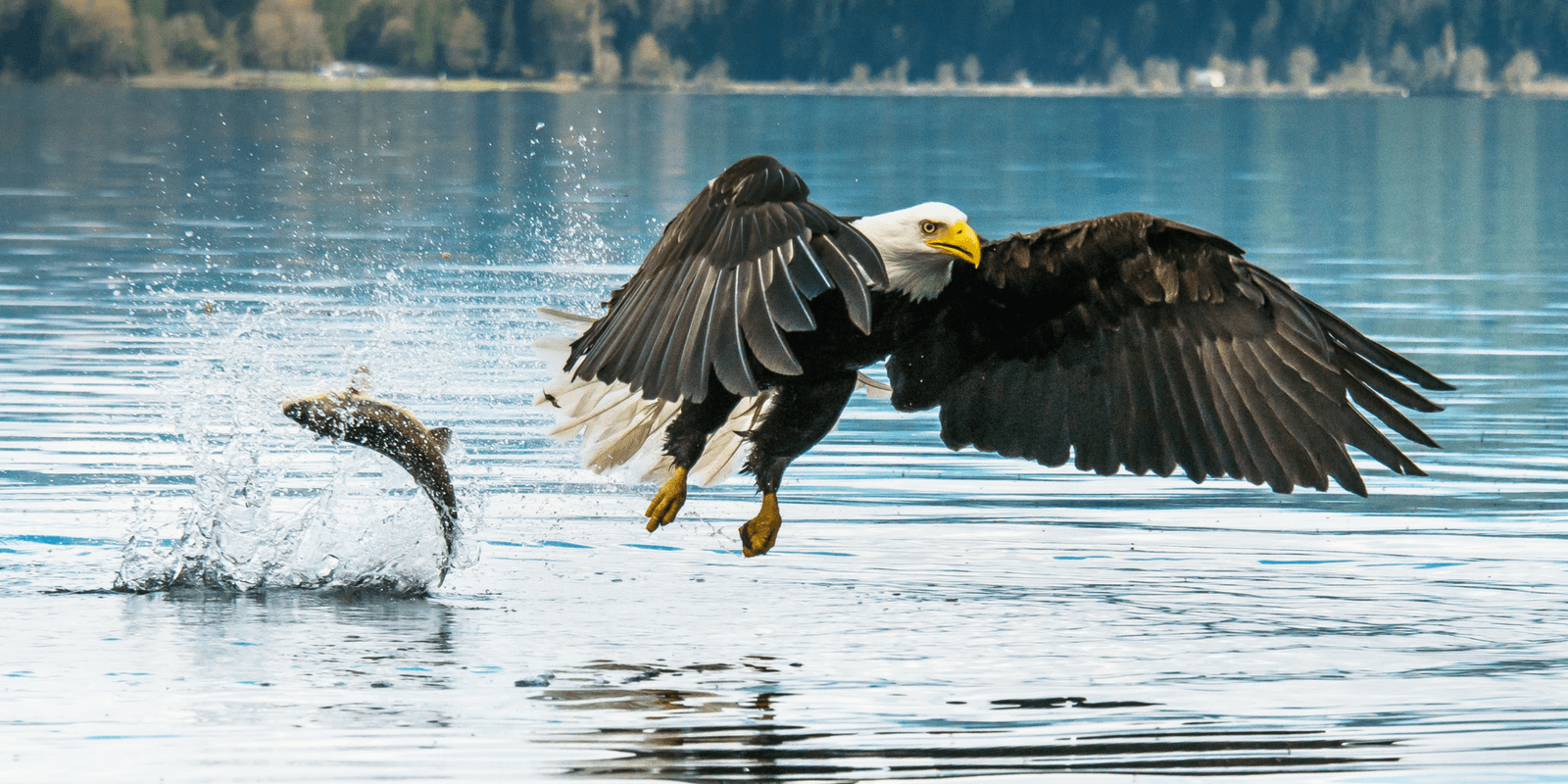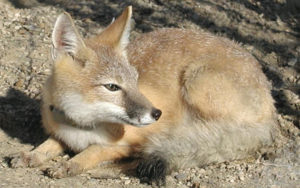We have much more to do and your continued support is needed now more than ever.
Congressional Spending Bill Delivers Wins for Wildlife

UPDATE 3/23: The Senate passed the omnibus spending bill and President Trump signed it
Congressional negotiators have agreed on a massive spending bill known as the fiscal year 2018 omnibus appropriations bill, and from a wildlife conservation perspective, there’s a lot to like. The $1.3 trillion bill passed the House today and now heads to the Senate.
“If you want to know what really matters to members of Congress, put them in a room, shut the door, and ask them to write a budget. When members hammer out a deal and have to stand up for what’s really important to them, we see the importance of wildlife, land conservation, and clean air and water shining through across party lines,” said Collin O’Mara, president and CEO of the National Wildlife Federation. “No one ever gets everything they want in a bill, but this is a budget deal that both Republicans and Democrats can be proud of.”
As E&E News reports:
Energy and environmental programs would be boosted or escape cuts in a massive fiscal 2018 funding package that reverses years of mostly austere federal spending.
Congressional leaders announced the accord late yesterday after weeks of arduous negotiations. The House is expected to pass the legislation as soon as today with the Senate likely to follow suit tomorrow in order to avoid a shutdown when current spending expires at midnight tomorrow. […]
U.S. EPA is funded at $8.1 billion in the bill, which is equal to current funding levels, despite White House calls to slash it by nearly one-third.
That amount includes $2.9 billion for the Clean Water and Drinking Water state revolving funds, an increase of $600 million, as well as $1.15 billion for the Superfund program, a $66 million boost for a priority of Administrator Scott Pruitt, according to committee summaries.
Importantly, the fire funding fix, which the National Wildlife Federation pushed hard for to protect wildlife and public lands, is currently included in the final bill.
A bill this huge impacts the National Wildlife Federation’s priorities in countless ways. Let’s walk through some of the headlines.
Protecting America’s Great Waters
Impacted species include, but are not limited to: river otters, horseshoe crabs, oysters, blue crabs, great blue heron, lake sturgeon

- The new program in the Delaware River Watershed will kick off a new restoration effort thanks to $5 million, the first funding of its kind for the Delaware River. It’s the culmination of years of work to convince Congress to invest in protection by the National Wildlife Federation and our affiliates, New Jersey Audubon, PennFuture, Delaware Nature Society, and Environmental Advocates of New York. The funds will support state and local projects that conserve and restore fish and wildlife habitat, help keep water clean and healthy, improve natural defenses to storms, and create more ways and places for people to enjoy the Delaware River and its waterways. One great example of the type of work proposed is seen as USFWS worked with local and national partners to remove dams along the Musconetcong River in New Jersey. The result: the return of shad to the river.
- Includes $300 million for the Great Lakes Restoration Initiative (GLRI), which helps provide much needed funding to help protect and restore our Great Lakes and helps keep invasive species, like Asian carp, out of the Great Lakes.
- It contains the exact amount the National Wildlife Federation had pushed for to fund Chesapeake Bay restoration, including $73 million for the Chesapeake Bay Program, with $6 million going to the Small Watershed Grants and $6 million going to Innovative Nutrient and Sediment Reduction Grants.
- The Environmental Protection Agency’s National Estuary Program received level funding at $26.7 million.
- The National Oceanic and Atmospheric Administration’s National Sea Grant College Program took a small hit and is down at $65 million (from $72.8 million last year).
- The National Estuarine Research Reserve Program will increase from $23 million to $25 million.
- The omnibus includes $30 million in NOAA-administered coastal resilience grants, a significant increase from past years.
- Great news that the omnibus does NOT contain a rider facilitating the Trump Administration’s proposed repeal of the Clean Water Rule, a 2015 rule clarifying protections for smaller streams and wetlands.
Agriculture
Impacted species include, but are not limited to: lesser prairie chicken, swift fox, bobolink

- The bill does not cut Farm Bill conservation programs, marking the first time in a decade that funding for Farm Bill conservation programs has been left entirely intact in an appropriations bill
- Conservation Operations are funded at $874.1 million, very close to what the National Wildlife Federation had been seeking.
- Unfortunately, the bill seeks to legislate science by requiring the Environmental Protection Agency to treat all biomass energy as “carbon neutral” no matter how much climate pollution it releases or how many years it takes for trees to regrow. The National Wildlife Federation will keep pushing for sustainable biomass energy policies.
Wildlife Conservation
Impacted species include, but are not limited to: swallow-tailed kite, Louisiana black bear, Canada lynx

- Land and Water Conservation Fund gets a $25 million increase ($400 million to $425 million).
- State and Tribal Wildlife Grants, the nation’s core program to fund states and tribes to prevent wildlife from becoming endangered, increased by $1 million a year. NWF will continue pushing for the Recovering America’s Wildlife Act, which will redirect $1.3 billion of existing revenue annually to state-led wildlife conservation efforts.
- As detailed above, the fire fix funding mechanism included to increase US Forest Service funding for fighting catastrophic wildfires, without taking money from other non-fire purposes like conservation.
- The final bill does NOT include a rider that would’ve forced construction of the $400 million Yazoo Pumps in Mississippi, as NWF’s Lacey McCormick called it, “what may be the world’s largest hydraulic pumping station to destroy 200,000 acres of wetlands for no discernable benefit.” Sen. Tom Carper in particular fought to keep the Yazoo Pumps out of the final bill. NWF will continue opposing this proposal that would damage or destroy an area of wetlands larger than all five boroughs of New York City.
Climate and Clean Energy
Impacted species included, but are not limited to: loggerhead sea turtle, piping plover, moose, wolverine, polar bears, snowshoe hares, pika, brook trout

- The Department of Energy’s Office of Energy Efficiency and Renewable Energy gets a $200 million increase.
- US Geological Survey funding for Climate Science Centers – now called National and Regional Climate Adaptation and Science Centers – remains at FY17 levels, which is good as the President’s budget proposed cuts.
- $3.6 billion is included for the Low-Income Home Energy Assistance (LIHEAP) Program, which is $250 million more than the FY17 level.
- Just as important as what’s in this bill – what it does NOT include. There were a series of attacks that could’ve made it into the final bill but were kept out by Congressional clean energy and climate champions. Here’s a list of those wins:
- No provision included to block spending on the Bureau of Land Management’s 2016 rule to limit methane waste from oil and gas wells on public & tribal lands.
- No provision included to block or delay implementation of updated ozone air pollution standards (EPA).
- No provision included to block use of a social cost of carbon metric in writing climate change rules.
- No provision prohibiting the use of funds for activities related to wind turbines off of Maryland’s coastline.
- No provision prohibiting EPA from using funds to implement Section 115 of the Clean Air Act (regarding transboundary international pollution).
- No provision prohibiting EPA from implementing its 2016 methane pollution rule for oil and gas facilities.
- No provision included to prohibit funds for the Green Climate Fund, which assists developing nations with climate adaptation and mitigation practices.
Environmental Education Wins
- EPA’s Office of Environmental Education is funded at $8.7 million, maintaining 2017 levels for the National Environmental Education Act.
- NOAA’s Bay Watershed Education and Training and Environmental Literacy Program grants received a combined $12.5 million.
- Title IVA of the Every Student Succeeds Act (ESSA), Student Support and Academic Enrichment Grants, are funded at $1.1 billion, a $700 million increase over 2017. These formula grants will give school districts nation-wide flexibility to support a wide range of programs, including environmental education, and field-based, hands on, and service learning opportunities to support STEM skills.
- Title IVB of ESSA, 21st Century Community Learning Centers, received level funding of $1.2 billion to support afterschool and out of school time programing, including environmental literacy.






















